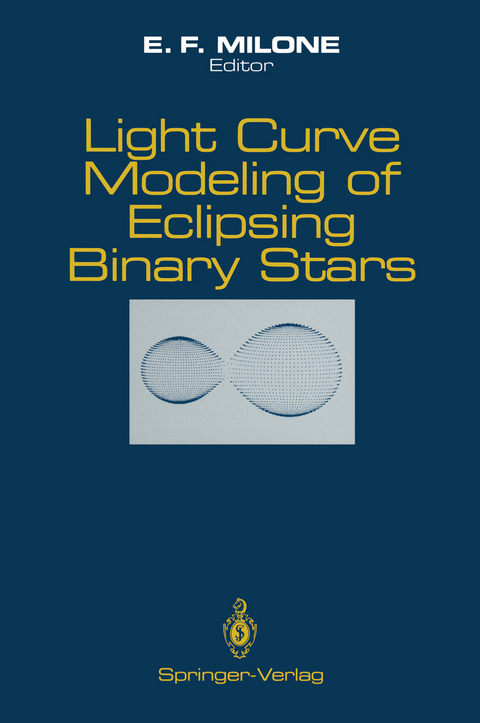
Light Curve Modeling of Eclipsing Binary Stars
Springer-Verlag New York Inc.
978-1-4612-7649-4 (ISBN)
Improvements in the Modeling of Eclipsing Binary Light Curves — An Introduction.- From Here to Observables: Beyond Light and Velocity Curves.- Spectral Energy Distributions of Circumstellar Gas in Algols.- Gradient Free Determination of Eclipsing Binary Light Curve Parameters — Derivation of Spot Parameters Using the Simplex Algorithm.- The New Wilson Reflection Treatment and the Nature of BF Aurigae.- Binary Star Rotation from Line Profiles.- Improvements to the Wilson-Devinney Code on Computer Platforms at the University of Calgary.- New Atmospheres for Modelling Binaries and Disks.- Light Synthesis Modeling of Close Binary Stars.- Current Status of the EBOP Code.- Improving the Light Curve Synthesis Program EBOP: Variable Position of the Periastron and Second Order Limb Darkening.- Linear and Non-Linear Limb Darkening Coefficients for Synthetic Light Curve Modeling of Binary Stars.- Light2: A Light-Curve Modeling Program.- Binary Maker 2.0 — An Interactive Graphical Tool for Preliminary Light Curve Analysis.- Problems Arising in the Modeling of the W Ser-Type Binary RX Cas.- Spot Solutions for Two RS CVn Systems: ER Vul and V711 Tau.- The Information Limit Optimisation Technique.- Comments on Light Curve Modelling Techniques and a Review of a Poster Paper.- Some Comments on Light Curve Solutions of Eclipsing Binary Systems.- Discussion.- Concluding Remarks.
| Zusatzinfo | VI, 202 p. |
|---|---|
| Verlagsort | New York, NY |
| Sprache | englisch |
| Maße | 155 x 235 mm |
| Themenwelt | Naturwissenschaften ► Geowissenschaften ► Geophysik |
| Naturwissenschaften ► Physik / Astronomie ► Astronomie / Astrophysik | |
| ISBN-10 | 1-4612-7649-7 / 1461276497 |
| ISBN-13 | 978-1-4612-7649-4 / 9781461276494 |
| Zustand | Neuware |
| Haben Sie eine Frage zum Produkt? |
aus dem Bereich


